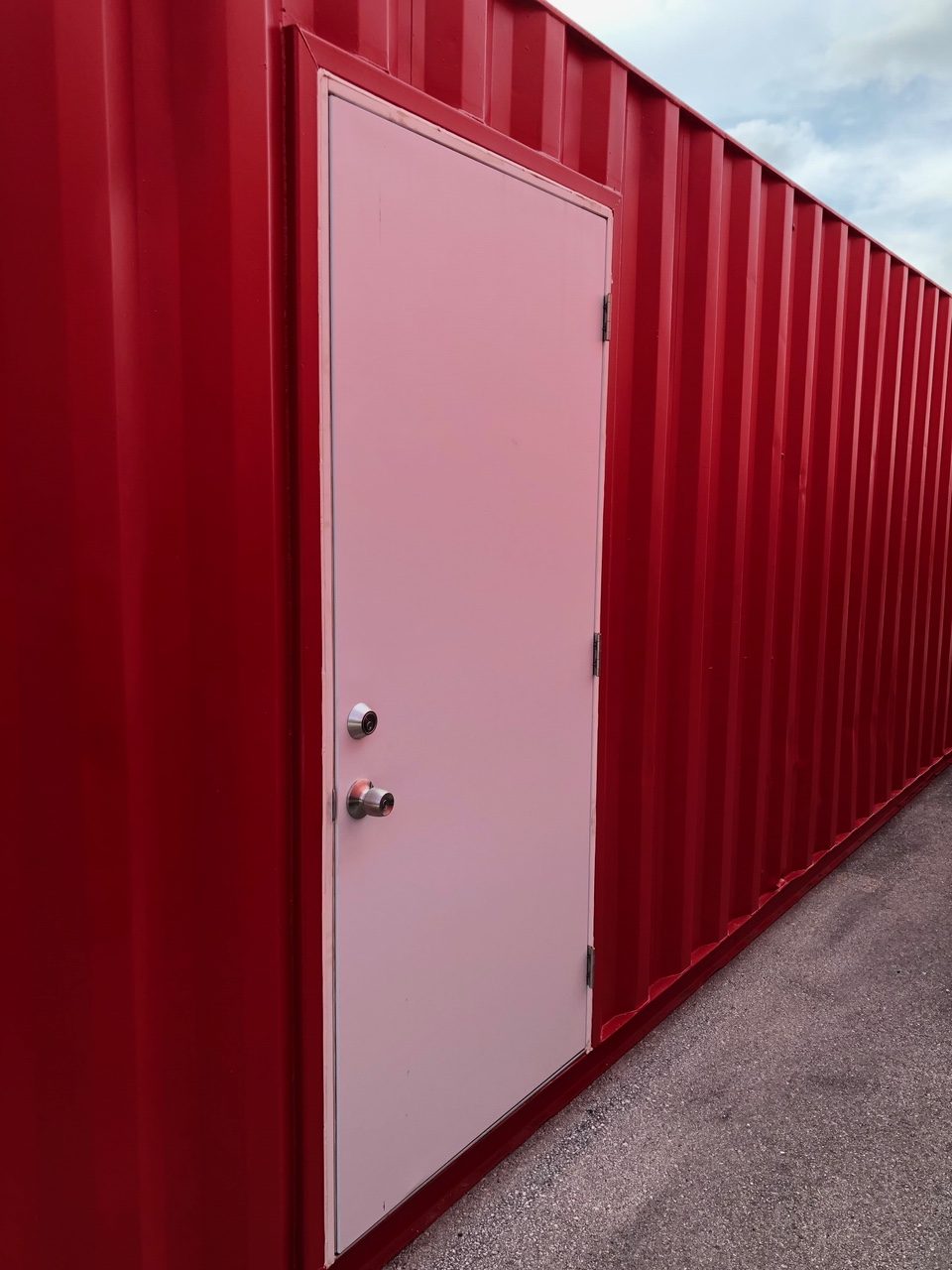Shipping Containers 101
Get your education on!
Shipping containers, storage containers, conex containers… what’s it all mean? We’ll boil down our 30 years of experience in the shipping industry into a crash-course on container basics so you can get a head start on what you need to know to select the best product to suit your needs.
Why use a shipping container for storage?
Mobile, self enclosed, weather & vermin proof, rarely needs to be permitted… a shipping container is a quick and effective storage solution. Shipping containers are constructed from corten steel (rust prohibitive), marine plywood flooring, and are built to withstand the rigors of ocean transport and salt spray. Compared to portable buildings, shipping containers / storage containers are your cost effective choice. Available in various lengths and easily modified to meet your needs from portable offices to a shipping container home. Modifications include insulation, additional access doors, doors on both ends, windows, etc. Give us a call, let us advise you on options that can be achieved with storage containers.
What’s the between a Shipping Container, a Storage Container and a Conex Container?
Like the name implies it’s all about how it’s being used. Most start out shipping cargo and get repurposed for storage applications. The historical name is “Conex Box” which is short for the “Container Express” (CONEX) box system developed and standardized in late 1952. The system was derived from the military system developed in the 40’s and early 50’s during WWII and Korea that delivered supplies to the front lines and required a modular system that could be easily delivered and accessed without requiring break bulk loading and offloading of ships. The unique lifting rings on the top corners, standard sizing and mounted skids made shipping and protecting cargo much easier saving time and expense.
How many sizes of storage containers are there?
Containers come in 20′, 40′ and 45′ lengths and vary slightly in height and width depending on the model (see chart HERE). While they are standardized to an exterior dimension of 8′ the outside height is either 8′-6″ or 9′-6″ depending on the length and type. These standardized measurements ensure the containers can be stacked evenly. The interior dimensions vary for multiple reasons including insulation or construction type.
How much do containers cost?
Pricing can fluctuate and is influenced by many factors including container size, condition (new or used), type & options and other market conditions. The best way to obtain an accurate price is to contact us by phone at 800-995-2417 or request a quote by completing this Quick Form. Don’t be fooled by brokers selling “cheap” containers. You get what you pay for and spending just a little bit more will save you years of headaches with your container. All of our containers are “cargo worthy” containers which means they are good enough to still be in service shipping goods across the ocean. Simply put… we won’t sell junk.
How does my container get to my site?
E&S Equipment uses specially designed hydraulic tilt trailers that make placement and delivery of shipping containers quick and efficient. Pulled by four wheel drive diesel trucks, our delivery services are operated by our own skilled team of drivers. Professional, courteous, and well versed behind the wheel, we can place your outdoor storage containers exactly where you want them to be. That isn’t the case when you choose portable storage buildings that require footers and structural supports. With multiple depot locations, a fleet of owned and operated transports, and a seasoned logistical team, we make the delivery process easy and transparent.
Do I need a permit to install a container as a storage building?
For the most part, a shipping container rarely requires permitting and very limited site preparation compared to a constructed building. Every municipality is different so please contact your city or county zoning office to get details on your location.
What kind of site preparation is required?
For your container to function optimally and last as long as possible, it’s recommended that the site be relatively level and firm. In most cases, the more site prep you do the better results you will have. Though an asphalt or cement pad is ideal, utilizing a bed of crushed stone and/or placing the container on 6″x6″ timbers is the next best thing. Containers placed directly on dirt which can become saturated and muddy could interfere with the operation of the doors and reduce the life expectancy of the container.


